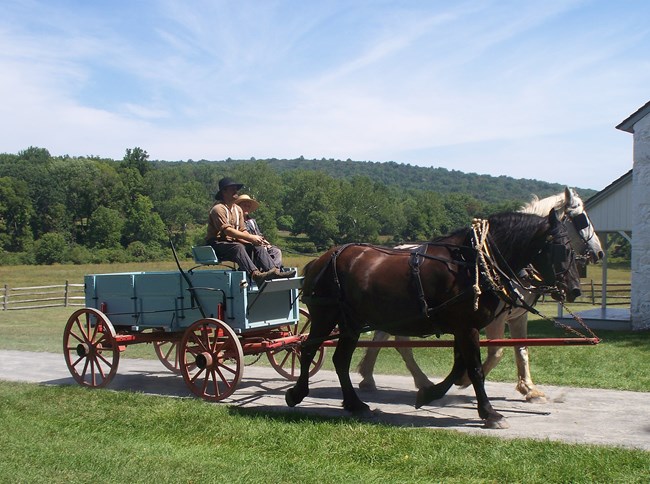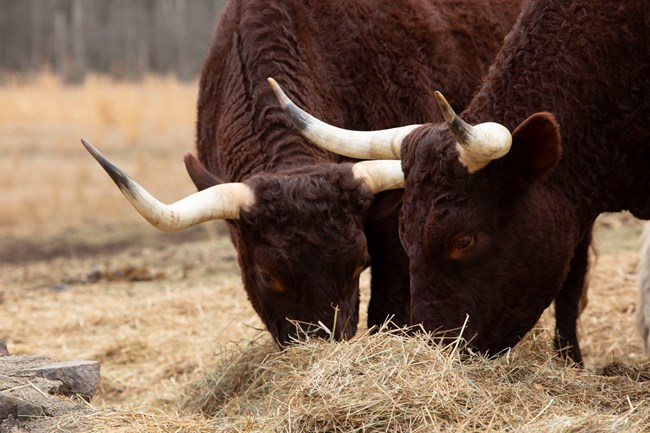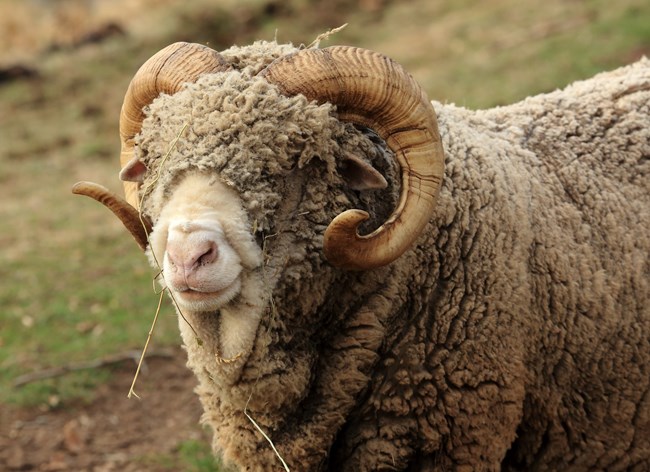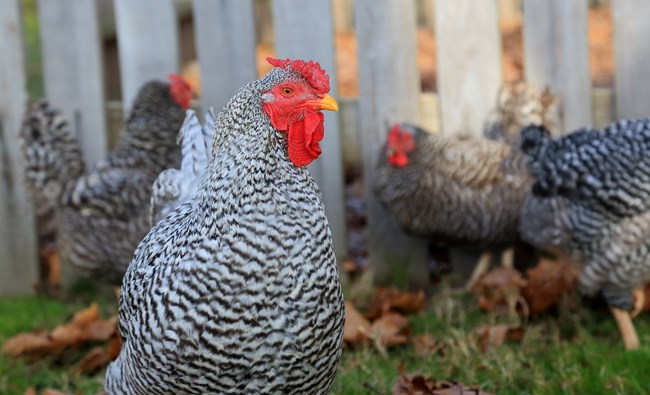|
Along with the many nationalities of people that immigrated to North America came animals unknown to the continent. Domesticated animals including horses, cows, pigs, sheep, and various species of fowl became common in early communities. Hopewell maintained a number of animals that provided food, power, and clothing materials necessary for the daily operations of the furnace and the lifestyle of its workers. 
NPS Photo HorsesOf all the animals in the furnace community, its horses were considered the most important. The natural ingredients for the furnace (iron ore, limestone, and charcoal), as well as its products (slag, pig iron, and iron castings), were carried in vehicles pulled by “draft” horses. Large and powerful, these animals were typically used in teams of two, four, or six to pull robustly built, heavily loaded wagons. Lighter, swifter, “driving” horses, hitched individually or in pairs, pulled smaller vehicles such as carriages and sleighs. The furnace owned as many as 82 horses and mules, keeping some at the barn and others at the mines and farmsteads the company operated. 
NPS Photo/Dhunjisha CattleTo provide food for themselves and the community, cattle were kept on Hopewell’s farm and by individual workers. “Milch” cows produced milk, meat and additional animals. As many as 20 steer would be butchered in the autumn to provide meat for the ironmaster’s house and to sell to workers at the store. One common breed of cattle at the time was the short-horned “Devon.” Hardy and versatile, they not only provided food products derived from cattle, but could also be trained to be draft animals (oxen) for pulling vehicles and farm implements. Hopewell purchased at least one team of oxen during its operations.
NPS Photo/ Dhunjisha SheepTo support its community of workers, Hopewell Furnace maintained a variety of smaller animals, among them a small flock of sheep. Most of Hopewell’s sheep were probably mixed breeds, made up of whatever sheep were available locally and could render the preferred qualities of meat or wool.One exception was noted in the sale of “1 marino (sic) ram” by the furnace company to one of its employees for the sum of $6.05 in 1818. The Merino was a recently arrived and highly prized breed of sheep in America during the early 19th century. Its wool was of the highest quality and Merino rams were often used to upgrade wool in offspring from females of other breeds with lesser quality wool 
NPS Photo/ Dhunjisha ChickensA variety of poultry including chickens, geese, turkeys, and ducks could be found at the farmsteads and tenant houses of the furnace community. Small in size, but large in importance, they provided meat and eggs for cooking as well as feathers for stuffing mattresses and pillows. Allowed to “free-range,” their foraging reduced the number of insects around homes and barns.The chickens presently kept at Hopewell belong to the “Dominique” breed. Recognized as early as the mid-18th century, the Dominique self-developed from various breeds of chickens first brought to the continent by European settlers. Prior to the 1840’s, the Dominique had no equal in the farmyards or doorways of our developing country. Hardy, easily raised and productive for eggs and meat, they were the best variety for common use on farms or in town. Other AnimalsHogs were raised at the farm and by employee families to furnish the large quantities of pork sold at the store and in private sales. Cats were kept to control the rodent population around barns and even dogs were noted to have been bred, presumably for hunting purposes. |
Last updated: June 17, 2025
